We're in a major shift in terms of how organizations think about growth. Product-led growth marks a change not only in growth but in marketing and customer behavior too.
Customers want to have even better software experiences and, in return, they’ll do most of your marketing for you. This focus on the product is leading to an uptick in word-of-mouth marketing and customer advocacy.
“Product-Led Growth is thriving. If you don’t believe that, just notice how the way of people experiencing software keeps changing. It is not enough for customers, a product to just deliver its value proposition. It needs to meet their needs and seamlessly enabling them to grow.”
Despina Exadaktylou, Founding Member, Director of training programs at Product-Led Growth Hub
In this article we cover:
- What it means to be product-led
- What is a product-led growth strategy
- Why PLG is important
- PLG examples
- Metrics for measuring PLG
What does it mean to be product-led?
Product-led means focusing on your product and using this as the main method of user adoption. By optimizing your product you can drive word-of-mouth marketing via customers who truly love your product.
Pricing strategies for PLG products tend to be freemium or free trial based - so that the customer experiences product value before purchasing.
What is the difference between market-led and product-led?
While product-led strategies focus on product usage and then customer experience, market-led tends to focus on the customer and their needs first then on the product.
The goal of product-led organizations is to have the product at the center of acquisition, whereas market-led organizations rely on market research and solving customer needs for acquisition.
What is a product-led organization?
Product-led organizations align their product strategy with their business goals and objectives. They also prioritize projects that'll help to develop the product into a driver of sustainable growth. They may do this through new feature development and iteration to improve the product.

What is a product-led growth strategy?
PLG strategy is a high-level view of what your product will be and what it's trying to accomplish. Your long-term and short-term goals for the product should be clear. This may include a roadmap of feature releases or plans for future marketing campaigns.
Some steps involved in PLG strategy include:
- Understanding your customers,
- Competitive analysis,
- Measuring your growth, and
- Product roadmaps.
If you’re looking to learn more about PLG strategy our sister community, Product-Led Alliance, has a guide on this very topic - get your copy here.
What has led us to product-led growth
Travis Kaufman, Technology Partnerships at Gainsight, shares what has led us to PLG strategy.
New market = new expectations
"I wonder how many people reading are working for organizations that were born in the cloud? You've always been a SaaS company, you've always had renewal revenue. And how about the other dynamic maybe you're an on-prem organization and you're now moving to the cloud and you're trying to jolt your organization.
"The reason I bring it up is that these expectations for some are very well understood and for others, they're still quite new. There are three dynamics that I'm going to talk about the first one is the fact that you have this subscription model - no longer can you sell your customer once and then kiss them goodbye, you have to deliver repeat value to them in order to keep them.
"The second dynamic here as it relates to product-led growth is around the expectations that customers have of your software - no longer can boring enterprise software, (and I've been involved in boring enterprise software for quite some time), you cannot be boring anymore, the expectations that your users have are now influencing whether or not they continue to use your product.
"And lastly, it's never been easier or more cost-effective to introduce a new SaaS offering today, and for organizations, this means you are now competing with more than just the top two known competitors, there is a myriad of solutions that you're now competing against.
"All three of these dynamics are what's influencing the different go-to-market motions that exist today."
Evolution of go-to-market strategies
"This is an evolution chart, and it's not to say that any of these models are dead or no longer exist, it's that we as an industry have evolved into how we can deliver our products and how our products can deliver value for our customers.
"First up you have your field sales team, I always imagine the vacuum cleaner salesman walking up to your door selling you this amazing vacuum cleaner even though you already have one - this was very well adopted in the early '90s.
"More efficiencies came into play with the introduction of an inside sales team so now you have this concept of closers and your outbound sales organization trying to drum up a new business, this motion exists now and is again, more efficient than the last.
"Next up, with the advent of new technology and the marketing automation space, you now have this concept of inbound marketing, we're generating content, thought leadership, we're trying to pull people into our organization as opposed to everything being an outbound motion.
"And lastly, where we are today is that organizations can now deliver their product ahead of time to that customer before they have made that purchase. This is the act of product-led growth. I'll put some more shape around this in a minute."
Product-led growth companies outperform SaaS
"Companies that have a product-led growth strategy have faster growth rates, they have higher multiples, and they're just generally worth more as an organization. And it's the fact they're more efficient with their customer acquisition and their customer growth strategies.
"Now this information was pulled from open view, they are one of the brain trusts of the product-led growth movement and so they've done a good amount of research on this subject.
"Here's a cute little definition of product-led growth - PLG is using your product as a vehicle to both acquire, engage with your customers, and grow with them.
"Now, most product lead growth talks focus on the acquisition piece, our mental models are set to where, 'if I have to grow my business, I have to acquire more customers'.
"Many of you reading may already have a well-established install base, you may be deriving additional value not by acquiring new customers with your product, but leveraging your products to increase retention rates, or to identify new expansion opportunities."
The importance of product-led growth
Despina Exadaktylou, Founder of Product-Led Growth Hub, explains the importance of product-led growth.
IT consumerization
"The frictionless, seamless experiences B2C solutions provide are now expected in B2B too. Organizations have to re‐examine how they drive revenue and use the product as the main growth lever. Product features, should onboard users seamlessly and sustain engagement levels. And they should do that quickly.
"Users now want immediate gratification. Time is the one element they don’t have. Even beyond that first experience though, Product-Led organizations retain and expand their clientele, based on products’ features and by keeping retention and support costs low."
Customer Demands
"The rise of the subscription era has liberated customers who can make up to twelve buying decisions within a year. If we add on that, the reduced switching costs, the surge of competition, and the strength of customers’ voices on social media we have the rise of an era where a sole user can hold all the cards under his sleeve.
"This shift has raised customer expectations from having a solution that can barely meet their needs to one that will allow them to grow while offering a stellar experience at the same time. An experience so strong and optimized that will make a prospect convert to paid in a matter of minutes and will be delivered on a consistent cadence to retain and expand him."
Self-Serve Customer-Centric Experiences
"In case you missed the memo, it is a fact that now buyers want to self-educate. Studies have found that nearly 75% of B2B buyers would prefer to buy without talking to sales.
"At the same time studies support that personalization is considered a given. The SaaS industry though is still struggling to get there as the disposal of human resources, even on a self-serve approach is up to 63%."

Why product-led growth is the future of SaaS
Despina Exadaktylou explains why PLG is crucial for staying ahead in the SaaS landscape.
"In the last 9 years, we have witnessed an explosion of new business models. All of them are designed to keep customers engaged in the long run —think Netflix, Amazon Prime, Salesforce, and Box. The renounced subscription economy era as Zuora likes to call it is here to stay.
"Customers prefer this model since it forces organizations to keep building services that meet their needs. SaaS organizations, on the other hand, try to optimize their go-to-market strategy on a consistent cadence. Usually by driving costs down and customer satisfaction up.
"The SaaS model will soon prevail over the rest. Every day the market is becoming more crowded with products promising to meet every need customers have. SaaS growth remains consistent as more companies adopt solutions for a plethora of business functions. Solutions that are not limited to core engineering and sales applications as seen in the early years of Salesforce.
"Gartner predicts that SaaS technologies growth will reach $85 billion in revenue figures by the end of 2019. This is almost 18% growth from previous years. It is also forecasted that the SaaS cloud application services market segment will reach $113.1 billion in 2021. This is almost twice the 2017 revenues of $58.8 billion.
"The industry has undergone many changes until Salesforce paved the way by proving its viability as a business model. As the SaaS model is rising though, so does competition and customer demands. There is so much noise out there. It is nearly impossible for a product offering to differentiate unless it invests in stellar product experiences. The kind that will keep customers coming back for more."
What are the main benefits of product-led growth?
PLG brings loads of great benefits to your organization, here are some of the top benefits:
- Better top of the funnel: Using a PLG strategy means your top of the funnel is much wider due to the freemium or free trial pricing strategy. In essence, your pricing is doing some of the acquisition for you.
- Reduced acquisition & retention costs: Since your product is so great you grow organically, and the customer acquisition cost is much lower. The same is true for the retention costs - having a great product means people will stick around longer!
- Data-driven onboarding journeys: Onboarding can be measured throughout the stages of the customer journey meaning it can be tweaked based on the customer data.
- Organizational cross alignment: Multiple departments work together to achieve common product benchmarks & KPIs to align with broader business goals.
- Increased customer satisfaction: PLG keeps customers at the center of the product so your customers will be satisfied and are likely to become advocates.
- Intuitive product features: Focusing on customer needs and an extensive onboarding process means that product features will be intuitive and easy for customers to use.

Types of product engagement
Maja Blazek, Product Marketing Consultant at mitologic d.o.o., shares her insights into the different types of product engagement.
"One of the tools that we can take from our PMM gearbox is in-product or in-app engagements (sometimes called in-app notifications), but I prefer engagements as your goal is to motivate the user to click, read more, and boost usage to increase their satisfaction. In other words, you want to lead them to that AHA! moment where they see the true value of the product.
"Products that use in-app engagements see a 3x boost in engagement and a 4x increase in conversions. In combination with email, you get a powerful combination to get excellent results.
"Let’s see how it works and the common use cases to drive onboarding, adoption, and retention using in-app messages."
1. Notifications about product updates and important information
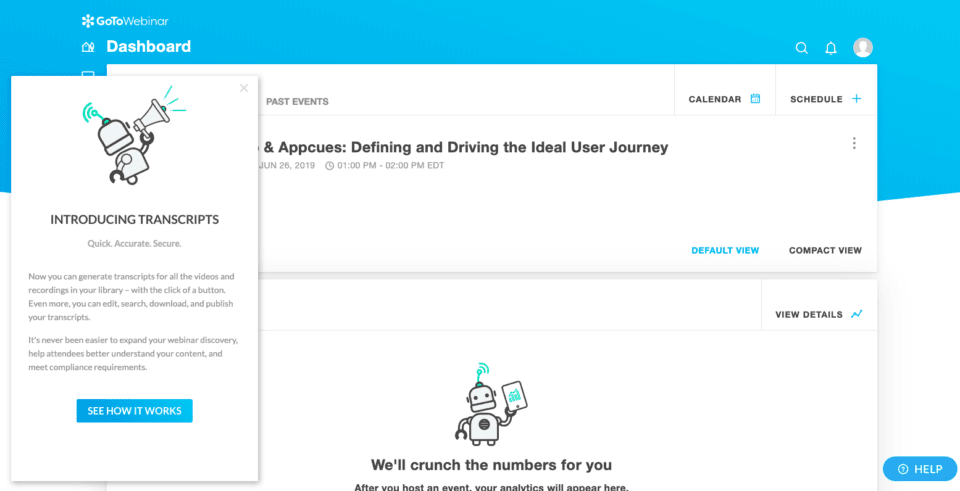
"Set up regular notifications that can help your customers follow all-important changes and updates in the product.
"These can be announcements of amazing new features, important bug fixes, improvements, or even announcements of some big upcoming change.
"We all know how important it is to inform users upfront and give them time to prepare for the change or inform them how to get in touch for more information.
"By using in-app messages, you get the additional channel except e.g. email communication.
"Use this type of message to share links to release notes, product how-tos, and other useful resources."
2. Onboarding product tours
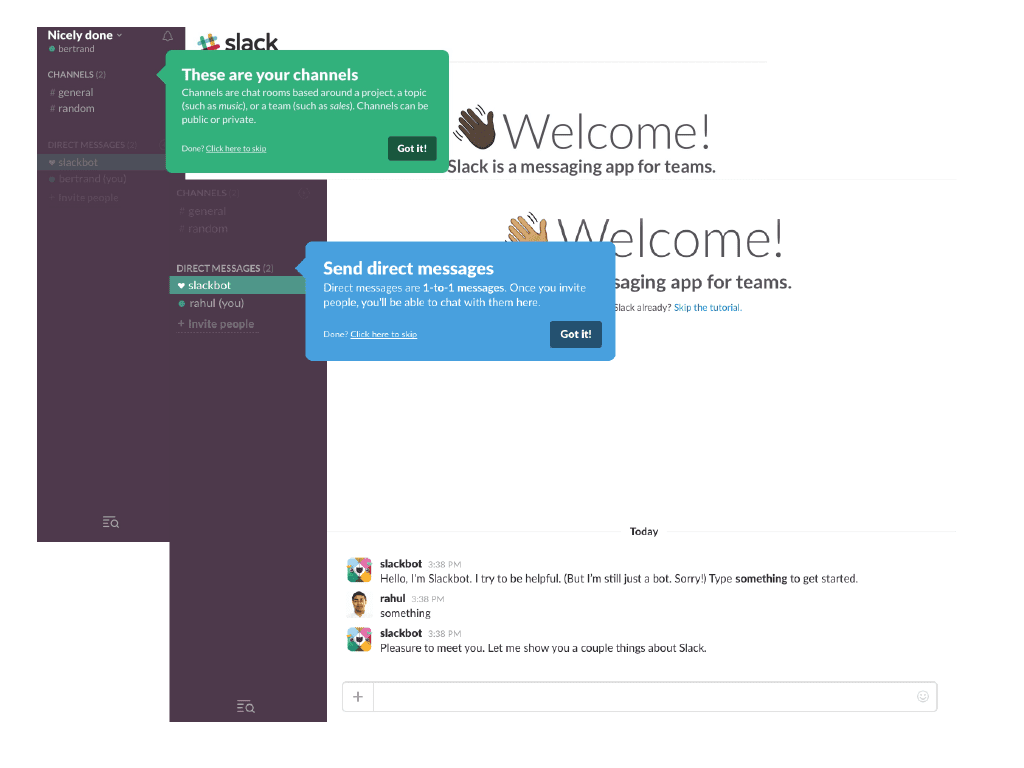
"Each new user needs proper onboarding. Sometimes a team stands behind this process, especially for complex products, while some don’t have people behind this. This is where in-product messages come in handy.
"Besides preparing great product documentation in your knowledge base and linking contextually from the product where needed, you can provide your new user a “welcome to your new home” tour.
"Considering that maybe your new users will need to use the product daily or weekly, make them feel comfortable.
"For example, set up a tour of 3-5 steps that shows up on their first login with some basic directions and resources, then you can set up another one after 5 logins with more ideas on what he can do.
"Do monitor how these tours perform, clicks, opens, progress till the last slide, etc., and optimize, don’t just leave it there."
3. Contextual, targeted, triggered engagements—increase feature adoption
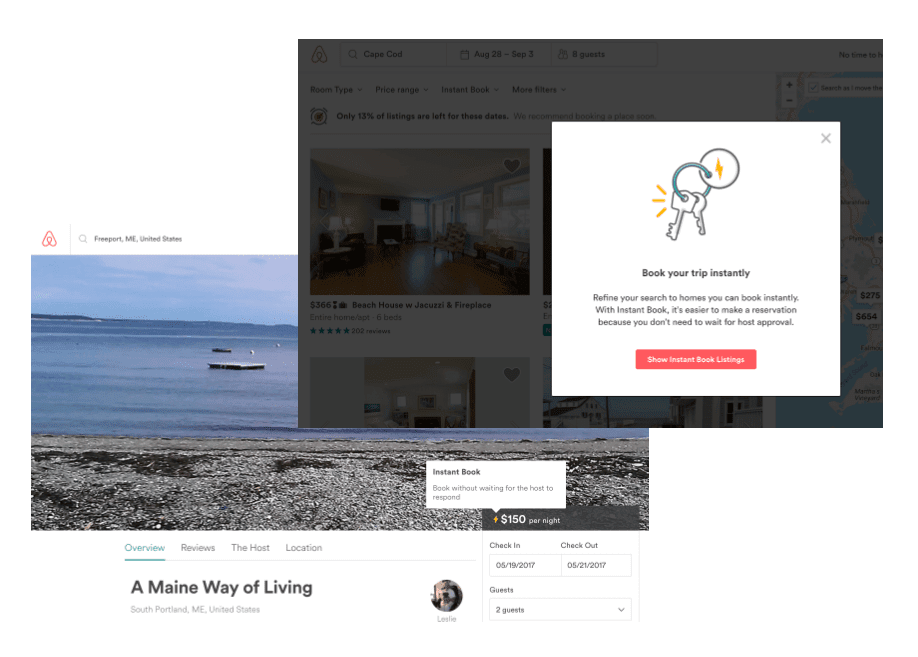
"In my case, we were using a powerful tool to monitor product analytics and how things are being used. This allowed us to be creative and smart, and group users by their behavior, feature usage, industry, and so on.
"First of all, you need a strategy behind this. Do you want to increase the adoption of the newly released feature which brings new use cases and simplifies some additional business operations?
"Or do you think customers don’t understand how to properly use something so you want to help them out?
"Now that you’ve built your segment (e.g. people from X industry, who logged in 10 times, never used Y feature), the creative part!
"Build compelling messaging, add a nice visual, add a CTA leading to a piece of content that will explain why they need to start using this, inspire them, teach them, show use cases, explain the business impact, and then show them how!"
4. Extra exposure to boost your content
"As I mentioned before, segment your audience and if you’ve built a nice piece of content that helps them improve business, boost it through an eye-catching announcement.
"It can be a webinar or an ebook! For example, if you are a PMM for a marketing platform, and your content team prepared a post on '6 best practices for eCommerce promotional newsletters', this can be useful for your users. Share it!"
5. Cross-sell and upsell
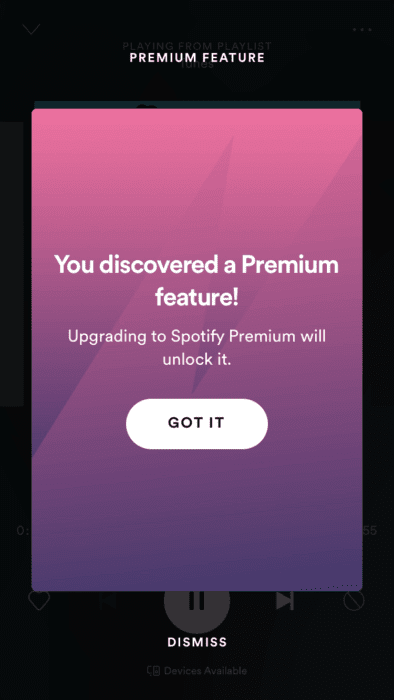
"Depending on your complete product portfolio and offer’s complexity, you can be creative and motivate customers to start thinking about other products or different plans, emphasizing the benefits and how it fits with the product they are currently using.
"Here is a creative example where in-product messaging works nicely with UI itself - a person clicked on a feature which is part of a higher plan and a pop-up showed up. Be contextual, show up at the right moment!"
6. Conduct NPS and collect feedback
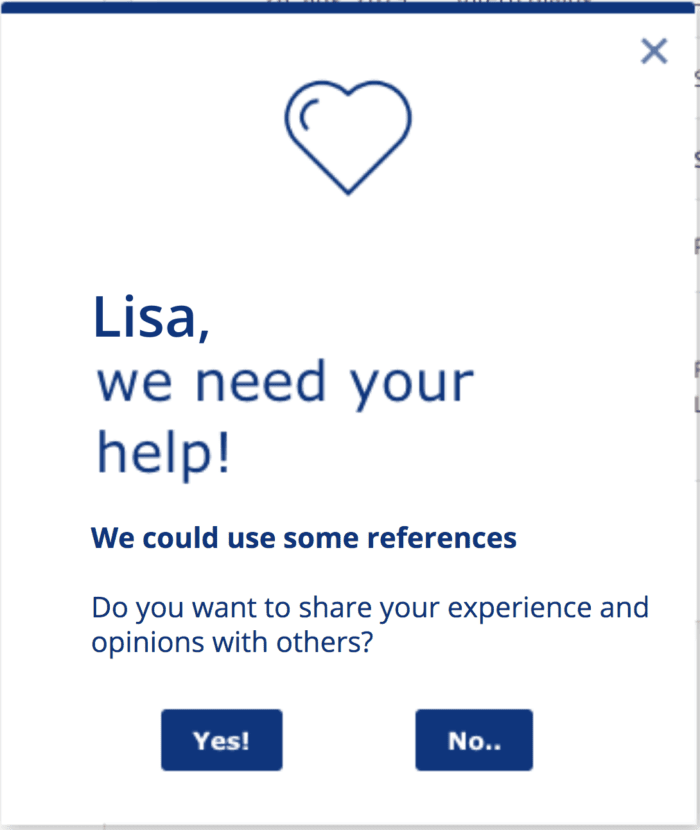
"Implement various types of surveys like NPS or CES or any other to learn about user feelings and thoughts about the product.
"Don’t forget to follow up based on responses—it can help you and your Product Manager improve many things.
"If there were some nice responses, try to build a relationship, ask for a recommendation and include your customer marketing activities here."
What are product-led growth examples?
Despina Exadaktylou shares some excellent real-life PLG examples.
- "Dropbox: Has a very data-driven approach to distinguish what features can be monetized and drive upsells. This is achieved via in-depth user research, customer development, and incorporating pricing into those conversations.
- "Expensify also charges based on the number of active users, which gives them a great expansion opportunity as individuals share the solution with their teams, and create a viral effect.
- "Typeform: The leading research software, opened its platform and prospects could build a form without signing up. Despite a 20% drop in registered accounts, users that eventually registered activated much better.
- "Slack: Slack, the paragon for PLG, has developed a bottom-up approach by heavily investing in usage and user experience first before Sales get involved."
Get more insights and examples by downloading our comprehensive research on 40+ Product-Led organizations.
How do you measure product-led growth?
Without measurement, it’s basically impossible to check if your PLG strategy is working. Here are some different metrics you can use to track your success.
Conversion rate
In this case, conversions measure how many free trial users or freemium accounts upgrade to a paid account. This can help you to understand what is helpful about your free product and what paid features make customers convert.
Time to value
Time to value measures the length of time until your product brings value to your users. This can help you to better understand your conversion rate. Understanding your ‘aha’ moment may help with this.
Lifetime value
This is the prediction of the net value of your relationship with your customers. The longer your relationships with customers the bigger the lifetime value! This can help you to understand your retention rates.
Churn
Churn is the percentage of customers lost over any one time period, this could be measured monthly or quarterly. This is important because high churn rates may mean your customers don’t value your product or indicate that they are using it wrong.
Active users
How many active users does your product have over a period of time? This could be daily, monthly, or annually. This is different from how many customers you have since some may buy your product but rarely or never use it.
If you’re looking to learn more about PLG metrics our sister community, Product-Led Alliance, has got you covered - check out the ebook here.
How to become Product-Led
Despina Exadaktylou shares her advice for becoming product-led.
"The road to success is not an easy one. Realizing a shift toward Product-Led GTM practices, especially when you need to align multiple departments, takes its toll.
"It requires intent, practice, and ongoing calibration. Organizations do not just try to improve their product’s value proposition. They adopt a series of practices, behaviors, KPIs, and solutions to ensure everyone is using the product as an engine of growth, retention, and expansion.
"As with any other strategy, there is not a standard way to achieve Product-Led Growth. We believe though that the points below will help any organization on its journey to becoming Product-Led."
Step One: Capitalize on Customer Feedback
"Delivering products customers love is a rather challenging task. Inside your organization, internal teams are competing over one another, trying to prove which features are imperative to be delivered.
"When delivering a customer-centric approach, capturing customer feedback is not optional. It is paramount for companies to achieve success and long-term prosperity. Unlike traditional GTM strategies, in a Product-Led one customer feedback is derived both by customer-facing teams and the product itself.
"Considering those estimations alongside business outcomes help organizations, come closer to customer needs and keep delivering their value proposition."
Step Two: Abandon Internal Silos
"Getting rid of silos’ domination is the first step forward an organization should take when providing an exceptional customer experience. Customer-facing teams, the direct or indirect surrogates of customer experience so far, along with Product Management need to establish a standard set of metrics when adopting a Product-Led Growth strategy.
"The employment of a unified agenda and alignment across and within departments brings clarity and optimizes product delivery across the board."
Step Three: Adopt the right Product-Led Growth Metrics.
"Data has always been the driving force behind SaaS growth. Organizations capitalize on various business metrics to derive the necessary insights. The importance to deliver stellar product experiences, however, make organizations reconsider their KPIs.
"There is a need to follow user progression in-app and adoption levels on a consistent cadence to promote Product-Led Growth.
"On a research study, conducted by ReinventGrowth on 40 SaaS organizations, it was found that Product-Led organizations use five key metrics to evaluate product experience. All those variables help to create consistency and common language-internal teams can use."
Product-Qualified Leads (PQLs)
"Product Qualified lead is defined as a prospect that signed up and demonstrated buying intent based on product interest, usage, and behavioral data.
"Why replace MQLs with PQLs? The MQL model identifies which prospect actions are considered indicative of buying intent. The model is highly subjective and based on marketing metrics. By relying on those KPIs, SaaS companies cannot gain greater visibility into buyer intent through product usage."
Breadth of Use
"An alternate form of (team) activation, product breadth helps product managers realize the extent a product is being used on an account level. As a product metric, it monitors account health and helps product managers and data owners proactively manage churn."
Breadth of Use: Points to consider
- "How many users log in during onboarding and how many later on?
- "The number of users that activate upon a new feature release. (Assuming that the targeted user segments are those realizing value with this feature)?"
Breadth of Use Calculation Formula
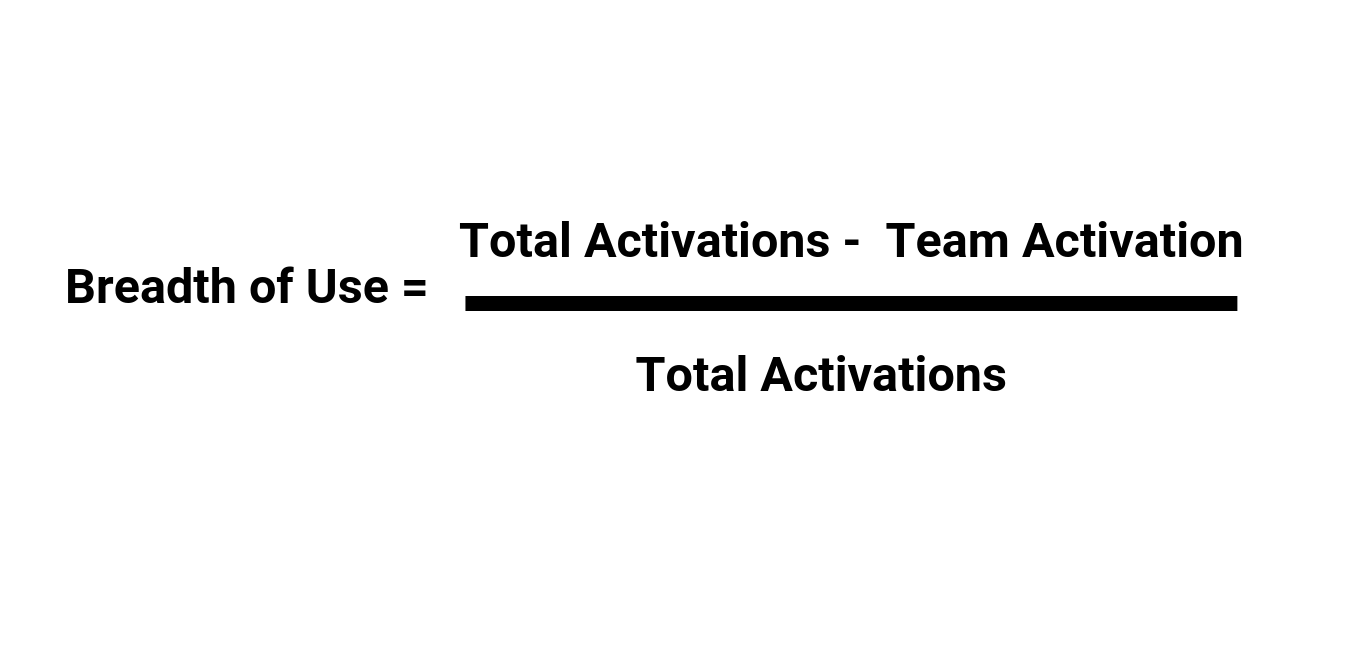
Depth of Use
"How extensively product key features are utilized is something that constantly troubles product managers. Onboarding should enable users progressively exploit a product’s features to their maximum extent. Depth of use is about adoption, both on a user and account level."
Depth of Use- Points to Consider
- "Which adoption levels (Depth of Use) correspond to which user role?
- "Does adoption increase due time? (aka are users growing within the service?)
- "Are internal teams able to reflect usage levels on Net Revenue and/or Net churn?
- "How is depth defined during the trial and how post-purchase? (Varying parameters per product/strategy/pricing plan)
- "Which adoption levels show signs of accounts’ expansion?
- "Which characteristics follow engaged users (retention) and which those abandoning the app?"
Depth of Use Calculation Formula
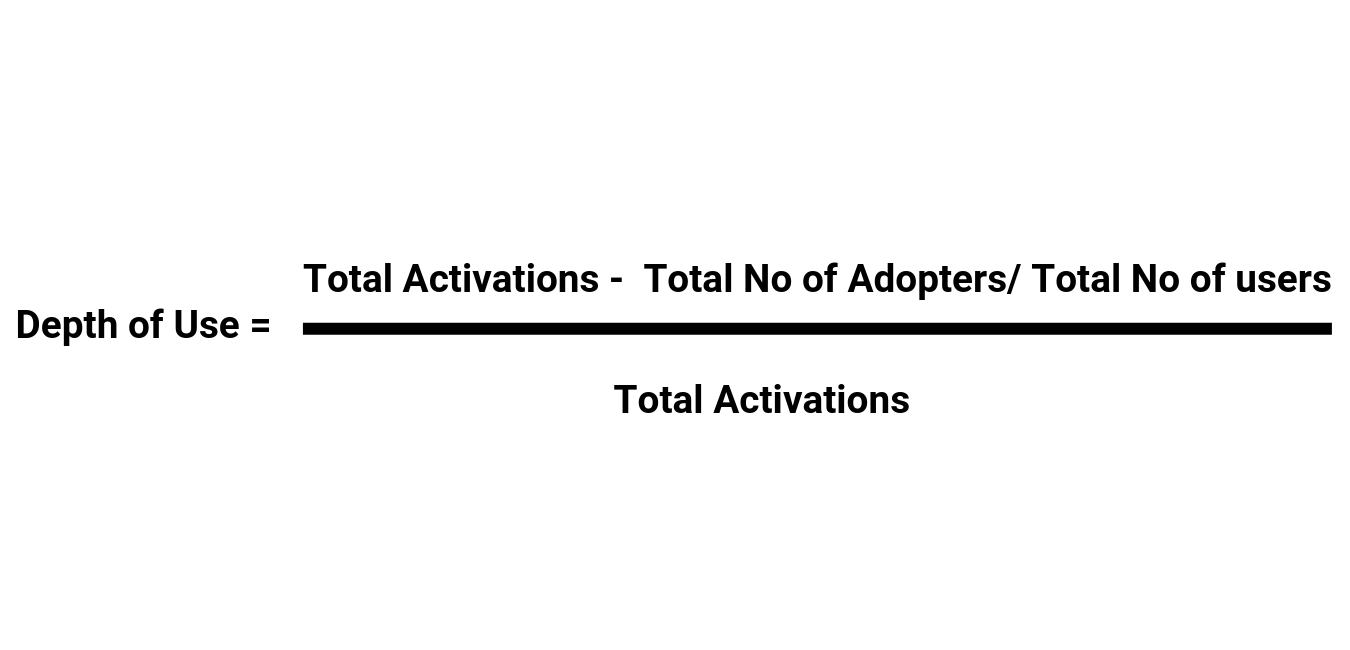
Efficiency of Use
"The difficulty level to complete common tasks is a critical evaluation of the onboarding flow. For efficiency to be measured accurately, product teams need to be aware of the total number of users per account who begin a task, versus those who complete it."
Efficiency of Use- Points to Consider
- "In this instance, onboarding flows should focus on historic usage per user role and account level by taking a concerted focus when adoption levels increase.
- "First-Time Activation:
- "a) For solutions offering many products first time activation, should break down the onboarding flows in many parts. This is how users will realize the ongoing value and increase their skills and investment.
- "b) Simpler solutions should experiment with shortening trial length by focusing on users’ actions in-app.
- "Internal teams should track if product onboarding activations decrease customer-facing teams' involvement.
- "Ownership of product data should be dispersed across teams. This is how a feedback loop will be embraced and enable them to foresee any anomalies that occurred throughout the customer journey."
Efficiency of use calculations formula
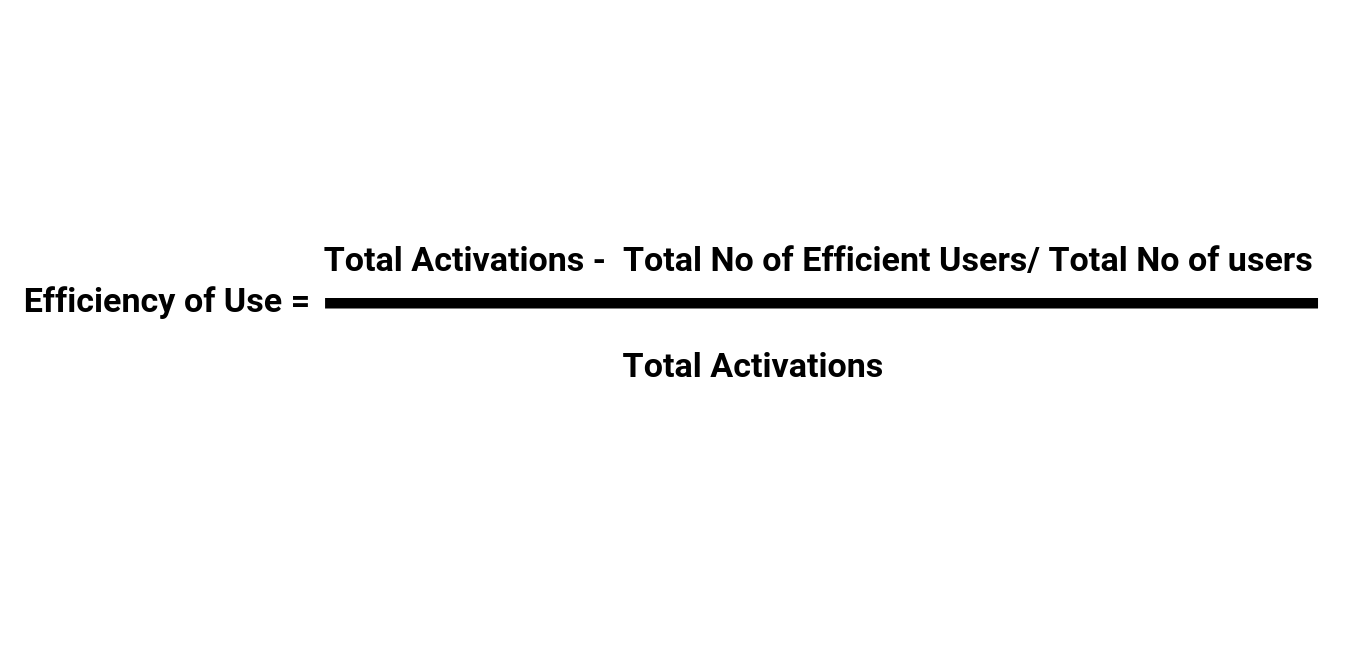
Frequency of Use
"Frequency of use is concerned with how frequently and for how long users engage with a product’s features. Reminding users why a specific feature is there in the first place and how it may further optimize their workflow is also something reliant to onboarding activations."
Frequency of Use- Points to Consider
- "Which features are used more frequently?
- "Which features correspond to each team’s use case?
- "How can teams be triggered in-app to increase usage in secondary features?
- "When and why each feature should be used? ( to better estimate the revenues and losses following them)
- "What made users return to the product or abandon it?"
Frequency of use calculations formula
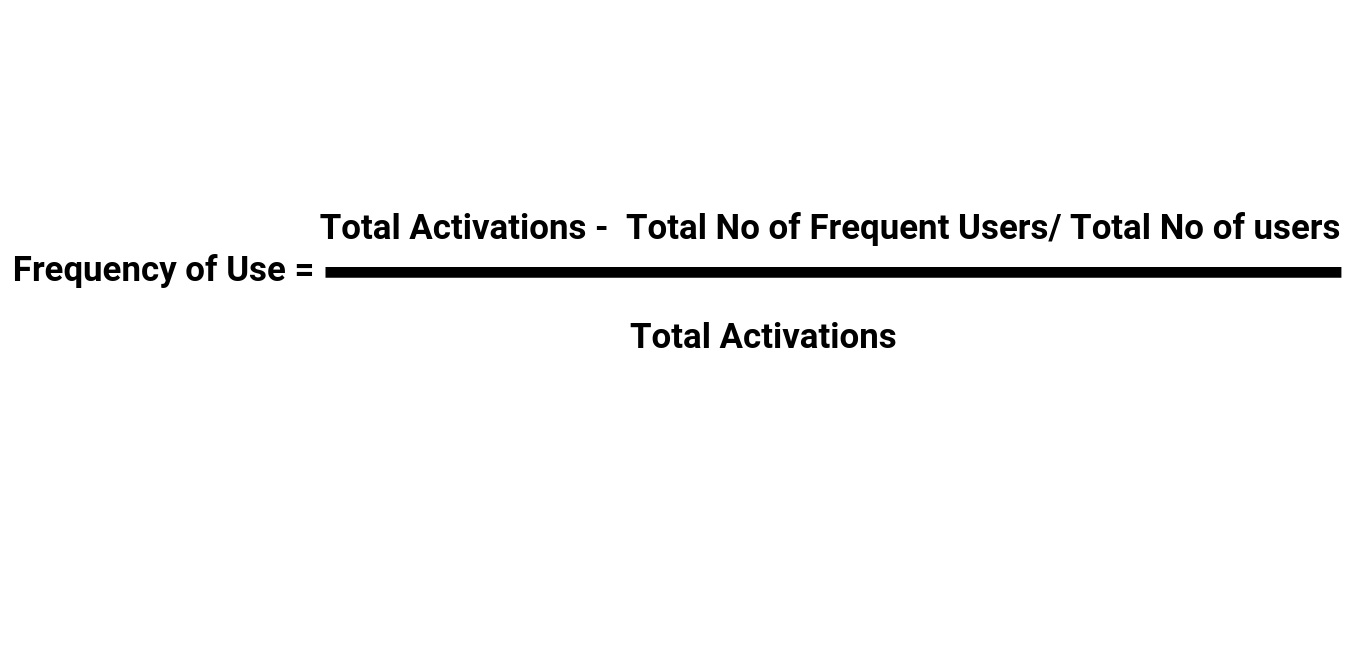
Step Four: Adopt the Required Technology Stack
"Unlike the toolsets emphasizing on account/user-level measurements, those capitalizing on Product-Led Growth also assess usage levels alongside customer feedback analysis. Those calculations help internal teams realize where upsell or cross-sell opportunities lie.
"These data constitute the foundation, towards new growth and advocacy and help internal teams achieve alignment and deliver stellar product experiences."
Step Five: Invest in Product Experience
"What is Product Experience? Product experience (PX) is part of the customer journey executed in-app. The point where users get onboarded, learn about new features, and realize value.
"Product managers should always strive to improve product experience to effectively cope with churn rates. As a matter of fact, studies have found that 52% of users experiencing a bad product experience will most likely not return to the solution."
Adopt a Product-Led Onboarding Onboarding™ Strategy
"Product-Led GTM practices transform onboarding prevalence. As a process, it no longer includes invasive, out-of-context in-app interactions presented at large in front of users. Product data capitalization enables product engagements to supplement the systemic process humans deliver.
"Product Led onboarding (PLO), is a set of data-driven product engagement practices that consider behavioral notions and users’ proficiency. Strategically, it avoids random feature introductions.
"Instead, it exploits historic data and considers prospects’ proficiency level when exploring a product for the first time. Contextual guidance constitutes its main pillar and enables product experience to double down on users’ workflow early on by following their progressive route to excellence.
"Product Led Onboarding exploits Product-Led Growth metrics to be assessed. This fact alone transforms onboarding into a single source of truth when referring to products’ capabilities and product experiences’ assessment.
"Product Onboarding Efficiency (POE) is a solid framework going forward to calculate its activations’ effectiveness. Product-Led organizations already use POE, to yield better results and assess product features ROI."
Onboarding funnel current challenges
"The SaaS industry is still in the early days of smooth in-product onboarding. Most organizations believe that their products are not able to explain their capabilities to new users. Things are even worse for those companies without a free offering. Almost 80% of them admit that the product onboarding experience is a leaky bucket.
- "Activation: Our Product-Led Growth research showed that sign-ups & free trial rates prevail as activation metrics with 66% preference. At the same time, feature adoption and user engagement are activation criteria by a limited 13% of organizations delivering a high-touch onboarding strategy.
- "Retention: Being subject to Customer Success activations on a high-touch onboarding strategy retention is a KPI for a limited 8%. At the same time a self-serve one, it's important for 33% of participants. Overall, retention is an important indicator for a limited 21% across both strategies.
- "Expansion: While 30% of revenue growth should arise from expansion most SaaS is likely at 10%. Why does this happen? Emphasis on acquisition, low product stickiness, and product developments that don’t meet customer needs."
The onboarding funnel is now product-led
"Product-Led Activation: Setting the right segmentation criteria is only the beginning. Product-Led activation should rely on data-driven, contextual guidance to deliver initial value early on and emphasize end-users goals. To achieve that, internal teams need to invest in behavioral aspects and usage levels when delivering the onboarding strategy.
"Product-Led Retention: Product-Led retention is the ongoing value delivered to end-users, directly from the product itself. To achieve that and increase adoption levels internal teams need to capitalize on three main pillars. Product-led growth metrics, use case variables, and customer feedback.
"Product-Led Expansion: Product-Led expansion is laser-focused on three important variables. How to excel in key features development by capitalizing on the results of product-led-growth metrics. The improvement of broken experiences to sustain engagement levels and boost upsells. The delivery of a usage-based pricing model that resonates with the product's value proposition."
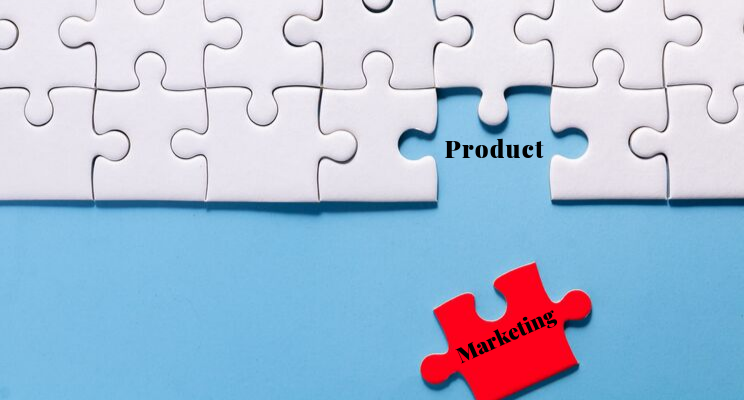
Product-Led Growth as a GTM Strategy
Despina Exadaktyl also shares how to use PLG as a go-to-market strategy.
"Product Led Growth (PLG) is achieved when organizations leverage product usage, to drive acquisition, conversions, retention, and expansion. Product-Led organizations deliver products that consider and answer customers’ evolving needs. Always by delivering stellar, customer-centric product experiences.
When a Product-Led GTM strategy is at play, the product is not a part of the customer experience.
"In a Product-Led GTM strategy, the product is the experience. An experience so strong and optimized that is driving conversions in a matter of minutes. While at the same time it is delivered on a frequent cadence to embrace retention and expansion levels. But this is only the tip of the iceberg.
"A PLG go-to-market strategy also aligns internal teams around product insights. In that way, internal silos are abandoned and an internal feedback loop across the organization is created."
Revolutionize your product-led growth
Product-Led Alliance is the world’s fastest-growing PLG community, and every course they create is built on the experience, knowledge, and success of the masses.
They have designed and built Product-Led Growth Certified: Core, a course dedicated to accelerating your learning and mastering product-led growth.
By the end of this course, you'll be able to confidently:
👊 Understand the breadth of product-led approaches.
🔥 Gain in-depth knowledge of the current state of PLG and how it came to be.
🚀 Walk away with and apply the common components of PLG with a proven strategy.
👊 Up-skill yourself in the core competencies required for getting started in PLG.
Sign me up!

















 Follow us on LinkedIn
Follow us on LinkedIn




.svg?v=3c4c23cd72)